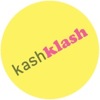Bruce Sterling’s brixels
But then his son — who had gone into “cloud design,†God help him — started referring to bricks as “brixels.â€
A brick house was a byword for solidity. “Solid as a brick house.†For a brick house to be malleable, temporary, gaseous, was a weird, crazy, extreme idea — as crazy as a trip to the moon. But a brixel was a brick: a mobile brick. A smart brick that was also a phone. A brick built around a phonechip, phones so high tech, so cheap, that they were cheaper than bricks. So that yesterday’s crown jewels, mobile phones, because building blocks.
Brixels locked together like children’s toys, and they were picked up and dropped, not by honest union bricklayers, but by little blind robots like an iPod lashed to Roomba. It took very little machine intelligence to move “brixels†around or to stack a huge wall out of “brixels.†A wall of brixels grew overnight. It was extravagantly patterned, like a computer screensaver. It was gorgeous. It was magnificent. It was very Italian.
KashKlash is a lively platform where you can debate future scenarios for economic and cultural exchange. Besides Bruce Sterling, the initial collaborators are Régine Debatty (of we-make-money-not-art), Nicolas Nova (LIFT) and Joshua Klein (author and hacker), who have been collaborating on initiating the discussion. The public domain project is conceived and led by Heather Moore of Vodafone’s Global User Experience Team and run by Experientia, an international forward-looking user experience design company based in Turin, Italy
(Also, make a note of Bruce’s forthcoming book, The Caryatids)





[…] Vote Bruce Sterling’s brixels […]
[…] Bruce Sterling on Kashklash KashKlash Facebook Group about me […]